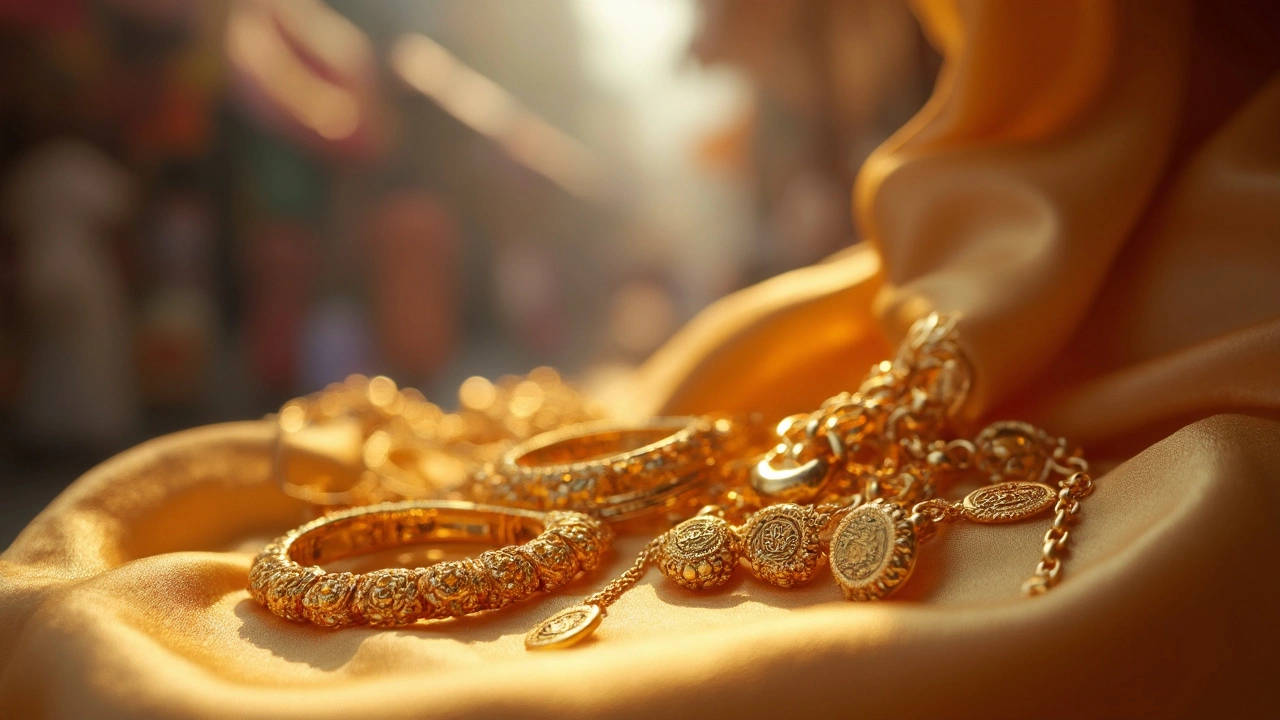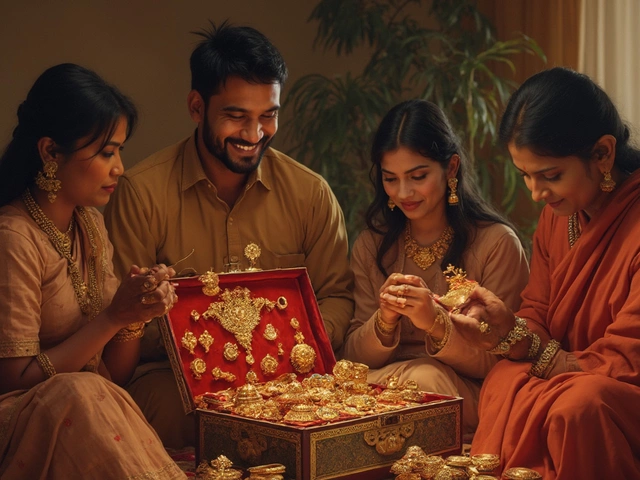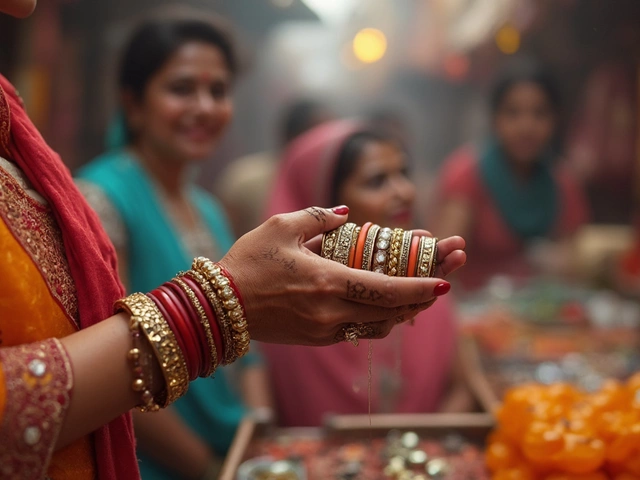
Ever wondered why some bits of gold jewellery fetch way better prices than others when you're ready to sell? You're not alone. The value of gold isn't just about shiny looks—it's a mix of purity, market trends, and even style. If you're looking to invest or just buy something nice that you might want to sell later, knowing what gives gold its resale edge is a game-changer.
First off, not all gold is created equal. The karat—yeah, that little number stamped inside the band—tells you how much pure gold is in your piece. This really matters when it comes time to turn your bracelet or ring back into cash. But here's the twist: just picking the highest karat isn't always the smartest move if you're thinking about resale. There's more in play, from how popular a style is to whether a jeweller's name is stamped on the clasp.
I used to just eyeball jewellery and guess at value, but after going through my own buying and selling runs (and, honestly, getting burned once or twice), I've learned what actually changes the numbers you get at the counter. Stick around. If you've got that gold piece from grandma or you're eyeing something in the shop window, these are the things to keep in mind to make sure you win when it's your turn to sell.
- Gold Purity and Karats Explained
- Why Some Gold Sells for More
- The Impact of Design and Brand
- Practical Tips for Maximizing Resale
- What Sellers and Buyers Overlook
Gold Purity and Karats Explained
If you flip over a gold ring or necklace, you'll usually spot a tiny number—like 24K, 22K, or 18K. That number is all about karats, and it tells you how much actual gold is mixed into your jewellery. The higher the karat, the more pure your gold is. 24K is as pure as it gets: pure gold, no fillers. But it’s soft, so not many folks wear 24K jewellery every day. Most gold jewellery you see is 18K or 22K, with just enough strength to survive daily wear while still having the shine and value you want.
Karats basically measure purity out of 24 parts. Here’s what that means:
| Karat | Gold Content (%) | Common Use |
|---|---|---|
| 24K | 99.9% | Investment bars, high-end jewellery in Asia |
| 22K | 91.6% | Jewellery (especially Indian/Asian) |
| 18K | 75% | Fine jewellery (rings, necklaces) |
| 14K | 58.3% | Everyday jewellery (US/Europe) |
| 10K | 41.7% | Budget or heavy-duty wear |
So which one brings in the best gold resale value? On pure numbers, 24K has the most gold per gram, so it's got the highest melt value. But it dents and scratches super easy. 22K and 18K hit a sweet spot—they stay stronger, still have great gold content, and are easy to resell, especially if they’re a popular style or from a trusted jeweller.
If you’re holding gold jewellery from the US, you’ll see a lot of 14K and 10K. They last longer and cost less, but you get less back per gram if you sell—even if the piece looks flawless. That’s something people only realize when they try to trade in their gold and get quoted less than expected.
The bottom line? If you want resale muscle, know the karat. Always double-check for the stamp or have a jeweller test the metal if you’re unsure—it can make a serious difference in what you walk away with.
Why Some Gold Sells for More
It’s tempting to think all gold jewellery will bring in the same cash, but the reality is pretty different. What makes one gold ring worth more than another? A lot comes down to purity, but there are more layers to this story.
The main driver is purity, measured in karats: 24K is the most pure, but that doesn't always mean you'll get top price. Pure gold is soft and easy to scratch, so in many places—especially outside Asia—jewellers and buyers prefer slightly less pure options like 22K or even 18K for better durability. The resale value for your gold resale value depends heavily on current market rates, which are easy to check online any day you like.
But here's an interesting twist—sometimes buying a piece with well-known branding (like Tiffany or Cartier) will net you a better resale price than just raw gold weight alone. People pay extra for big names and certain classic or popular designs. On the flip side, if your piece is heavily customized, trendy (translation: likely to go out of style fast), or dented, local buyers and pawn shops may only care about the gold’s weight and purity, nothing more.
- Standard gold coins and bars usually resell for closer to market value than jewellery.
- Jewellery with intricate designs, lots of gems, or heavy wear may actually drop in value, since resellers might need to melt it down.
- Stamped pieces (hallmarked with clear karat ratings and sometimes branded marks) are easier to sell and get better offers than unmarked gold.
Market demand matters, too. In certain countries—India and much of the Middle East—22K jewellery is a hot favorite, so it fetches better prices than in places where 14K is the norm. Local tastes and gold-buying habits really change what buyers are willing to pay.
Remember, when you go to sell, the buyer will subtract for making charges (that fancy work that went into shaping your piece) since, unfortunately, they can’t always resell that same style. They’ll also look at how much gold is actually in your piece vs. stones, clasps, or empty spaces. So if you’re shopping now but thinking about the future, pick jewellery that’s not just pretty, but also holds its value—in purity, simplicity, and sometimes a big-name stamp.

The Impact of Design and Brand
Alright, here’s the part most people miss: how much the design and brand of your gold jewellery affects what you’ll get back at resale. It’s not just about how much gold is melted down. Buyers—especially big dealers and collectors—love pieces from well-known brands or timeless designs. Let’s break down why.
Jewellery from brands like Cartier, Tiffany & Co., and Bulgari often carries what’s called “designer premium.” That’s just a fancy way of saying you could get 10-30% more, sometimes higher, compared to similar pieces with no brand name, even if the gold weight and karat are the same. In India, brands like Tanishq and Kalyan Jewellers also command better rates in resale because people trust their authenticity and craftsmanship.
- Gold resale value jumps when names like Cartier or Tiffany are stamped on the inside. These aren’t just labels – they signal real value to buyers.
- Modern, minimal designs tend to hold their resale better than super trendy or overly unique looks. Think plain gold bangles over funky fashion sets.
- Vintage pieces, especially those in classic styles—like 22k gold chains or filigree work—can get higher prices with the right buyer, often because the craftsmanship isn’t found in today’s factory pieces.
- Custom jewellery rarely keeps its original cost on resale unless you’re a known designer. Personal engravings can actually drop the value, so if you’re thinking of resale, skip adding those initials.
If you want cold, hard data, here’s what recent online auctions and resale sites show:
| Brand/Design | Average Resale % of Original Price | Notes |
|---|---|---|
| Tiffany & Co. | 80-90% | High demand, classic pieces |
| Cartier | 85-95% | Best resale for signature items |
| Non-Branded | 60-70% | Depends on purity & style |
| Custom/Personalized | 40-55% | Unless superstar designer |
| Traditional Indian Brands | 70-80% | Trusted, but less global demand |
If you’re shopping for gold jewellery and plan to keep value in mind, stick to simple, well-known designs from brands with track records. You’ll thank yourself if you need to sell in the future.
Practical Tips for Maximizing Resale
If your goal is to get the most cash when selling your gold jewellery, you need a plan that goes beyond just buying high-karat pieces. Let’s get straight to what makes the difference—both before and after you buy.
- Gold resale value is highest with items that have kept their paperwork. Store those receipts, certificates, and even branded boxes. Buyers and shops trust authenticity, so proof boosts your payout.
- Don’t cut or resize your jewellery unless you absolutely must. Customized pieces lose resale value because they’re harder to resell or melt without waste.
- Keep the condition top-notch. Scratches, missing stones, or bent clasps mean less money. If you want a quick polish, just ask the shop instead of using harsh chemicals at home.
- If you haven’t worn a piece for over a year, consider selling when gold prices spike. Watch global gold rates—they can change weekly. For example: in April 2024, gold reached a record $2,400 per ounce in some markets.
- Branded jewellery from names like Tanishq, Malabar, or Cartier often fetches better rates on resale than no-name pieces, especially in original condition with paperwork.
Take a look at how different factors play out in actual resale:
| Factor | Impact on Resale Value | Example |
|---|---|---|
| Karat (Purity) | High purity gets more, but 22K and 18K sell quicker than 24K, which is softer and less wearable | 22K gold bangle is easier to sell than a pure gold (24K) chain |
| Brand | Big brands and hallmarked pieces get 5-15% more | Branded gold ring vs. unbranded |
| Condition | Worn or scratched jewellery can sell for up to 10-20% less | Unworn earrings vs. ones with dents |
| Design Popularity | Trendy or classic designs are easier to sell | Simple gold bands vs. outdated or chunky designs |
| Market Timing | Selling when prices are high gives more profit | April 2024 vs. a drop in March 2023 |
The small stuff matters. Check for hallmarks—BIS in India, or 750 for 18K overseas. Before selling, call a couple of buyers—you’ll be shocked how much offers can vary for the same piece. One last tip: if you really want top dollar, get the weight checked by a digital scale in front of you, not behind the counter. That way, you don’t get shortchanged on grams.

What Sellers and Buyers Overlook
People get so caught up hunting for bargains or selling for quick cash that they skip over details that really impact their return. The first big thing? Documentation. If you have the bill, hallmark certificate, or even the original box, those aren't just paperwork—they’re proof your gold is genuine and valuable. Buyers love proof. Sellers with paperwork almost always get higher offers, especially at reputable shops or if you’re reselling branded jewellery.
Next, buyers often forget to actually weigh the gold pieces they're scouting. Don’t trust what someone says—or the tag on the display. Weigh it yourself. Over time, tiny bits can get filed off for repairs or resizing, meaning the real weight might be less than what the original purchase form says. Weight mismatches can shave a surprising amount off your payout, or let you spot a bad deal before it’s too late.
Here’s another shocker: the resale market doesn’t care much about “designer” unless it’s from a globally recognized brand, like Cartier or Tanishq. For most jewellery, what matters is the purity and weight, not whether it’s got a special pattern or an unknown local brand on it. Only the big names fetch collector-type prices—otherwise, you’re selling based on melt value more than looks.
One more thing buyers overlook is checking for hidden costs. Selling gold jewellery isn’t just about the metal’s price per gram. Shops and dealers tend to subtract charges for things like stones, enamel, or even making charges from the total value. So if that ring has a lot of “extra” bling, realize you won’t get paid for those additions—they’re just for showing off, not selling.
- Keep all documentation (bills, certificates, boxes)
- Weigh your pieces yourself and verify the gold’s weight
- Avoid overvaluing local designer pieces unless they’re well-known
- Ask upfront about deductions for stones or workmanship
Most people focus on the shiny surface, but the real deal is in the nitty-gritty: actual weight, authentic proofs, and knowing you might only get paid for the gold resale value, not every extra embellishment. Keeping these points in mind makes the whole process way less stressful—and way more profitable.


